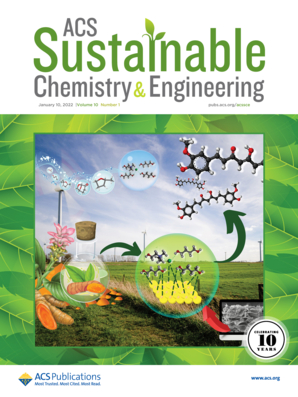Fermentative Production of 2,4-Dihydroxybutyrate from Glucose via a Redox Balanced Route
IF 7.1
1区 化学
Q1 CHEMISTRY, MULTIDISCIPLINARY
引用次数: 0
Abstract
2,4-Dihydroxybutanoic acid (DHB) is a hydroxy fatty acid originating from butyric acid characterized by hydroxyl groups at the second and fourth carbon positions. Besides being initially synthesized as a precursor for methionine to improve animal nutrition, DHB is also acknowledged as a sustainable platform chemical to produce biobased products in the chemical and pharmaceutical industries with broad market potential. In this study, we illustrated a redox-balanced pathway for the de novo biosynthesis of DHB utilizing the native metabolic route of the E. coli strain, which highlights the advantage of the l-homoserine derived pathway for DHB biosynthesis. Subsequent improvements were achieved through systematic metabolic engineering strategies, including deletion of competing pathways, reinforcement of the biosynthetic pathway, and increasing the availability of precursors. The engineered strain achieved a production titer of 22.0 g/L DHB in a fed-batch bioreactor, the highest ever recorded yield of fermentative DHB production from glucose. This study demonstrated an effective de novo biosynthetic route for the sustainable production of DHB from abundant biomass.

求助全文
约1分钟内获得全文
求助全文
来源期刊

ACS Sustainable Chemistry & Engineering
CHEMISTRY, MULTIDISCIPLINARY-ENGINEERING, CHEMICAL
CiteScore
13.80
自引率
4.80%
发文量
1470
审稿时长
1.7 months
期刊介绍:
ACS Sustainable Chemistry & Engineering is a prestigious weekly peer-reviewed scientific journal published by the American Chemical Society. Dedicated to advancing the principles of green chemistry and green engineering, it covers a wide array of research topics including green chemistry, green engineering, biomass, alternative energy, and life cycle assessment.
The journal welcomes submissions in various formats, including Letters, Articles, Features, and Perspectives (Reviews), that address the challenges of sustainability in the chemical enterprise and contribute to the advancement of sustainable practices. Join us in shaping the future of sustainable chemistry and engineering.
 求助内容:
求助内容: 应助结果提醒方式:
应助结果提醒方式:


